Sarah L. Johnson's Blog, page 51
July 6, 2019
A collection of #HNS2019 links - summaries of the latest Historical Novel Society conference
As I mentioned last week, I recently returned from a two-for-one conference trip that saw my two worlds colliding (or at least coming closer together). National Harbor, Maryland, the site of the 8th Historical Novel Society North American conference, and Washington, DC, where ALA Annual was held, are about 15 miles apart, so I went to first one, then the tail end of the other.

The conference had about 420 people attend, which was great to see. Having co-founded the North American conferences along with Ann Chamberlin (and marketing coordinator Claire Morris) back in 2005, when we had half as many participants, I enjoy seeing how the conferences have grown and expanded since then. There were a plethora of panels to choose from, two wonderful keynote speakers in Dolen Perkins-Valdez and Jeff Shaara, a massive afternoon book signing, and cocktail parties that let me catch up with old friends and meet people I'd been in contact with only on social media or email. Based on the attendee list, there were many people I never saw; the hotel, the Gaylord, was enormous. My friend Alana White and I co-presented a session on research for historical novelists that was scheduled as a small group Koffee Klatch session, but we had almost 70 people show up and stay for the full hour, sitting or standing. Not bad at all!
Although I didn't end up taking detailed notes, some of my fellow #HNS2019 attendees fortunately did.
At A Writer of History, M. K. (Mary) Tod summarizes the panel The State of Historical Fiction, in which the conference's participating editors and agents discussed the current picture and future of the genre. Two takeaways: publishers are on the lookout for unique takes on WWII and diverse perspectives on historical times.
Mary also provides an overview of Tips on Writing a Series, with panelists Donna Russo Morin, Nancy Bilyeau, Patricia Bracewell, and Anne Easter Smith.
Novelist J. D. Davies attended the conference while visiting America for the first time.
Betty Bolte wrote about the top 5 lessons she learned from #hns2019.
The latest of Kate Quinn's conference recaps, which are always entertaining to read.
Highlights of the conference from debut novelist Kip Wilson, author of White Rose.
More highlights from the Secret Victorianist, aka novelist Finola Austin, whose upcoming novel Bronte's Mistress will be one to watch for.
Janna Noelle has some tips on getting the most out of a writers' conference such as HNS.
Liza Nash Taylor's experiences at the HNS conference and the Nantucket Book Festival. She spoke about women's fashion in history.
A newspaper writeup from the Prince George's Sentinel that focuses on the readers' festival.
And here's my book pile from the ALA exhibit hall. Some of these will be offered for review for the Historical Novels Review, while others I'll be keeping for readers' advisory or review purposes later this year.


The conference had about 420 people attend, which was great to see. Having co-founded the North American conferences along with Ann Chamberlin (and marketing coordinator Claire Morris) back in 2005, when we had half as many participants, I enjoy seeing how the conferences have grown and expanded since then. There were a plethora of panels to choose from, two wonderful keynote speakers in Dolen Perkins-Valdez and Jeff Shaara, a massive afternoon book signing, and cocktail parties that let me catch up with old friends and meet people I'd been in contact with only on social media or email. Based on the attendee list, there were many people I never saw; the hotel, the Gaylord, was enormous. My friend Alana White and I co-presented a session on research for historical novelists that was scheduled as a small group Koffee Klatch session, but we had almost 70 people show up and stay for the full hour, sitting or standing. Not bad at all!
Although I didn't end up taking detailed notes, some of my fellow #HNS2019 attendees fortunately did.
At A Writer of History, M. K. (Mary) Tod summarizes the panel The State of Historical Fiction, in which the conference's participating editors and agents discussed the current picture and future of the genre. Two takeaways: publishers are on the lookout for unique takes on WWII and diverse perspectives on historical times.
Mary also provides an overview of Tips on Writing a Series, with panelists Donna Russo Morin, Nancy Bilyeau, Patricia Bracewell, and Anne Easter Smith.
Novelist J. D. Davies attended the conference while visiting America for the first time.
Betty Bolte wrote about the top 5 lessons she learned from #hns2019.
The latest of Kate Quinn's conference recaps, which are always entertaining to read.
Highlights of the conference from debut novelist Kip Wilson, author of White Rose.
More highlights from the Secret Victorianist, aka novelist Finola Austin, whose upcoming novel Bronte's Mistress will be one to watch for.
Janna Noelle has some tips on getting the most out of a writers' conference such as HNS.
Liza Nash Taylor's experiences at the HNS conference and the Nantucket Book Festival. She spoke about women's fashion in history.
A newspaper writeup from the Prince George's Sentinel that focuses on the readers' festival.
And here's my book pile from the ALA exhibit hall. Some of these will be offered for review for the Historical Novels Review, while others I'll be keeping for readers' advisory or review purposes later this year.

Published on July 06, 2019 05:00
June 29, 2019
The Mozart Girl by Barbara Nickel, a lively story of Wolfgang Mozart's musically talented older sister, Nannerl
 Please forgive my two-week absence! I was away at the Historical Novel Society conference in National Harbor, Maryland, and then at the American Library Association conference exhibits in DC. Then I returned to the library and quickly got overwhelmed with work.
Please forgive my two-week absence! I was away at the Historical Novel Society conference in National Harbor, Maryland, and then at the American Library Association conference exhibits in DC. Then I returned to the library and quickly got overwhelmed with work.But without further ado, on with some reviews of historical novels. This one is for a middle-grade story, but readers of any age can enjoy it.
Maria Anna Walburga Ignatia Mozart enjoys beautiful gowns, birthday gifts, and sweets as much as any 12-year-old girl, but she has an extraordinary talent and big dreams. She yearns to perform music before royalty and to become a world-famous composer.
The first goal may be achievable, but the second sadly isn’t, because she lives in Salzburg in 1763, and only boys like her younger brother, Wolfi, can hope for a musical career. Although “Nannerl” loves her playful sibling, she’s jealous of the attention he receives and dislikes doing household chores while he practices music.
As the Mozart parents and their two Wunderkindern head out on a Grand Tour, from Munich’s Nymphenburg Palace to Versailles, Nannerl writes in her journal, performs for high-ranking audiences, and secretly composes her own symphony.
This lively middle-grade novel will make young female readers glad they live in today’s world rather than in the 18th-century Habsburg Monarchy. There’s no escaping the unfairness of Nannerl’s situation (in fact, I found myself wishing this theme was handled less heavy-handedly). Readers will also sense Nannerl’s elation when the Elector of Bavaria acknowledges her talents and requests a special concert just to hear her play (this is based on fact).
Through a subplot involving the Elector’s musically accomplished sister, Sopherl, the novel highlights the importance of female solidarity. Nickel also shows how Nannerl’s envy of her brother is solely because of societal strictures. Wolfi is depicted as an incredibly gifted, mischievous boy who looks up to her.
The cultural atmosphere is well-evoked, from German holiday specialties to costumes to travel; with sedan chairs as the proper mode of transport at Versailles, Papa Mozart worries how he’ll afford it. A swift-moving novel that will inspire readers to seek out information on the real-life Nannerl.
The Mozart Girl was published by Second Story in 2019; it was first published in 1996 as The Secret Wish of Nannerl Mozart. (I wrote this review for May's Historical Novels Review.)
Nannerl's story was also revealed in two historical novels for adults, both entitled Mozart's Sister - one by Nancy Moser (2000), and another by Rita Charbonnier (2005).
Published on June 29, 2019 06:41
June 15, 2019
Dawson's Fall by Roxana Robinson, a timely novel of the Reconstruction-era South
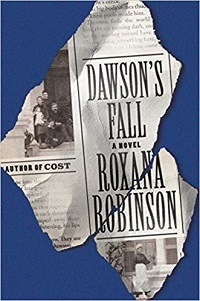 Robinson’s documentary novel intermingles fiction and family memoirs, period editorials, letters, and journal entries in its penetrating rendition of key moments during the lives of her great-grandparents, Frank and Sarah Morgan Dawson. Their characterizations and strong principles are clearly etched throughout; both were outliers in their time yet inextricably defined by it.
Robinson’s documentary novel intermingles fiction and family memoirs, period editorials, letters, and journal entries in its penetrating rendition of key moments during the lives of her great-grandparents, Frank and Sarah Morgan Dawson. Their characterizations and strong principles are clearly etched throughout; both were outliers in their time yet inextricably defined by it.English-born and a defender of the rule of law, Dawson is moved to join the Confederate Navy; he later rises to become a prominent Charleston newspaper editor, whose progressive writings championing African Americans’ rights and civic participation make him unpopular. Raised in a Louisiana family brought low through loss, Sarah is a talented writer all-too-aware of women’s social inferiority. The novel’s suspenseful second half details a disturbing incident involving the Dawsons’ neighbor and governess.
While the patchwork approach means the narrative isn’t exactly smooth, it proves unyielding in its timely themes, with many depictions of how white men’s seething resentment erupts into racist violence and how Southern codes of honor and toxic values, particularly slavery, corroded individual lives and the national character.
Dawson's Fall was published by FSG in May, and I reviewed it initially for Booklist's May 1 issue. When I first started reading it, I realized the characters felt familiar but couldn't pinpoint why. Later on, I remembered it was because the central character in another book I'd reviewed over a decade ago, William Baldwin's A Gentleman of Charleston and the Manner of His Death , was also based on Frank Dawson, although in that book he was called David Lawton, and his family was also fictionalized there. I found Robinson's to be the better novel of the two.
Sarah Morgan (later Dawson) was the author of A Confederate Girl's Diary, a six-volume set of journals first published in 1913, and which has become a key primary source about the Civil War experiences of Southern women. Read more about it at Documenting the American South.
For more background to the novel, read Robinson's interview with Publishers Weekly, in which she addresses her family history, research, and weaving history into fiction ("I made up almost nothing," she says).
Published on June 15, 2019 12:21
June 11, 2019
Marriage, mayhem, and murder: Allison Montclair's witty historical mystery The Right Sort of Man
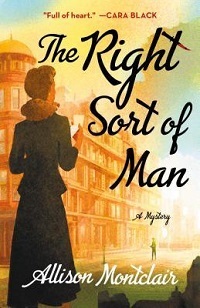 Allison Montclair’s The Right Sort of Man sees two unlikely business partners running a matrimonial agency in post-World War II London – and teaming up to pin down a murderer. It’s an inspired pairing. Mrs. Gwendolyn Bainbridge, a tall, elegant war widow, has an intuitive knack for sizing up characters and situations, while Miss Iris Sparks has moxie to spare, a string of past fiancés and lovers, and an analytical mind that served her well in wartime intelligence (which she isn’t allowed to talk about). Their ongoing banter is quick and clever without feeling forced.
Allison Montclair’s The Right Sort of Man sees two unlikely business partners running a matrimonial agency in post-World War II London – and teaming up to pin down a murderer. It’s an inspired pairing. Mrs. Gwendolyn Bainbridge, a tall, elegant war widow, has an intuitive knack for sizing up characters and situations, while Miss Iris Sparks has moxie to spare, a string of past fiancés and lovers, and an analytical mind that served her well in wartime intelligence (which she isn’t allowed to talk about). Their ongoing banter is quick and clever without feeling forced. In part, think The Bletchley Circle but with cheeky wit instead of creepy suspense. Both women have traumatic personal histories that shape their approaches to life, though, which lends the novel a sense of gravitas absent from more standard cozy mysteries.
Their new business venture, located in upscale Mayfair (which would be a fashionable venue if not for the bombed-out rubble surrounding their building), threatens to derail after their latest client is found stabbed. Tillie La Salle was a shopgirl with aspirations to marry out of the East End, but Iris knows she isn’t fully on the up-and-up (“a shady lady from Shadwell,” she calls her). The police are certain the mild-mannered accountant that Iris and Gwen had set up for a date with Tillie is the culprit, but the pair, suspecting otherwise, set out to clear the man’s name.
Gwen may come from a posh background, but she’s game for expanding her social horizons (her attempts to navigate London’s public transport are very funny). On the serious side, she’s forced to live with her controlling aristocratic in-laws, who took custody of her six-year-old son while she was deep in mourning for her beloved husband. Despite her brashness, Iris has self-esteem issues and is unused to having female friends. She and Iris had met at the wedding of mutual acquaintances and set up their shingle shortly after, but they don’t know each other very well, and part of the fun is seeing how their personalities interact.
Alongside them, Montclair has assembled a terrific supporting cast, from to the women's occasional secretary, who goes by Sally, to Iris’s policeman former lover, to Gwen’s delightful son, Ronnie. The post-WWII era is far more than window-dressing, and the period lingo feels right. Even the acknowledgments at the very beginning are witty. It does strike an odd note that few seem distraught by Tillie's demise, even with her shifty connections, but overall, this is a choice item for your summer reading pile, and a great start to a new series.
The Right Sort of Man was published by Minotaur on June 4th; thanks to the publisher for providing me with a copy.
Published on June 11, 2019 05:00
June 8, 2019
Mark Haddon's The Porpoise, a quasi-historical mythic tale about women's lack of agency
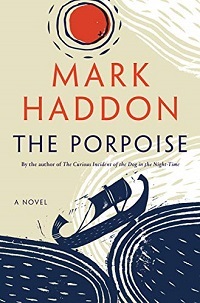 Haddon’s (The Pier Falls and Other Stories, 2016) new novel works on multiple levels: as an entertaining adventure, a creative patchwork of an ancient story’s many manifestations, and an exploration of how women suffer when men control their fates.
Haddon’s (The Pier Falls and Other Stories, 2016) new novel works on multiple levels: as an entertaining adventure, a creative patchwork of an ancient story’s many manifestations, and an exploration of how women suffer when men control their fates.Born after her pregnant mother's death in a plane crash, Angelica grows up in luxury, but her father, Philippe, sexually abuses and isolates her, and the staff on his English estate are little help. An attempted rescuer, the son of Philippe’s business associate, is attacked by Philippe and flees for his life.
Aboard the Porpoise, an oceangoing yacht, the young man’s journey turns fantastical as he transforms into Pericles, Prince of Tyre, hero of the Shakespearean play, whose story parallels the modern-day situation. The settings are colorfully rendered, and the fast-paced action is occasionally disorienting as scenes alternate between Pericles’ quasi-Greek world, a gritty Jacobean London, and Angelica’s traumatic life.
Considerable attention is paid to the viewpoints of Pericles’ abandoned wife and daughter. Playful yet unsettling, Haddon’s tale offers timeless themes and should particularly interest aficionados of myths and legends.
The Porpoise will be published on June 18 by Doubleday, and I reviewed it initially for Booklist. Does it count as historical fiction? Sort of. Don't expect absolute accuracy in the ancient Greek aspect (this is deliberate). I did enjoy the different view of Jacobean London. Haddon's best-known book is, of course, The Curious Incident of the Dog in the Night-Time.
Published on June 08, 2019 05:00
June 3, 2019
A visual preview of summer 2019 in historical fiction from UK publishers
Here's a collection of new and upcoming historical novels from British publishers, with their corresponding cover designs. Please note that the UK focus below reflects the publisher, not necessarily the author's nationality. Some of these twelve books will be appearing from North American presses later this year, while for others, I recommend Book Depository. I'll be traveling to the UK later this year and am hoping to find some of these in person.
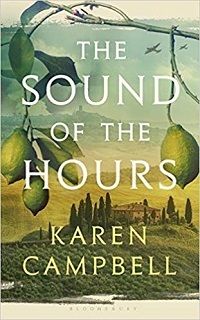
A young woman in occupied Tuscany during WWII falls in love with a black American soldier. Bloomsbury, Sept. 2019. [see on Goodreads] Also published by Bloomsbury in the US.
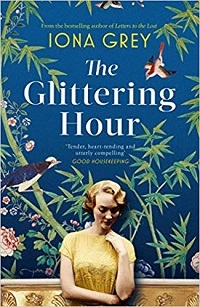
Romantic historical fiction set amid the exuberance of post-WWI England, from the award-winning author of Letters to the Lost. Simon & Schuster UK, May 2019. [see on Goodreads] Also to be published by Thomas Dunne in the US in December.

A shift in historical era for the multi-faceted Harris, whose new thriller is set in a remote town in Exmoor, southwest England, in the 1460s. Hutchinson, Sept 2019. [see on Goodreads] Also to be published by Knopf in the US in November. Thanks to Sarah OL for mentioning this book in an earlier comment.
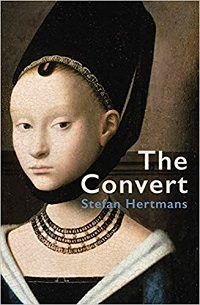
Another forthcoming historical set in medieval times. Based on a true story uncovered by the Flemish Belgian author, The Convert reveals the life of a young woman from Provence who converted to Judaism to marry the man she loved. Text, July 2019. [see on Goodreads]

I've enjoyed Hislop's novels set in Greece, including The Island, The Thread, and The Sunrise. Her newest also has a Greek setting, this time during the German occupation and the country's civil war, and four decades later. Headline, May 2019. [see on Goodreads]
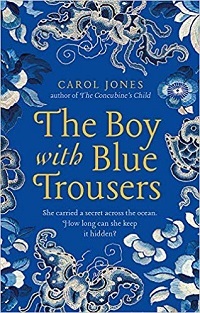
Australian writer Jones intertwines the stories of two women, one English and one Chinese, during the quest for gold in 19th-century Australia. Head of Zeus, June 2019. [see on Goodreads]
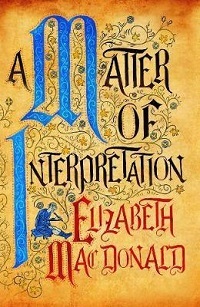
This new offering from an Oxford-based small press is another medieval on the list; it centers on 13th-century mathematician and scholar Michael Scot and his travels on behalf of Holy Roman Emperor Frederick II. Fairlight, Sept. 2019. [see on Goodreads]

African-born Susan, a servant in a Catholic household in late 16th-century England, is on a quest for her lost brother and her lost personal history. It's been blurbed by Miranda Kaufmann, the author of Black Tudors. Jacaranda, May 2019. [see on Goodreads]
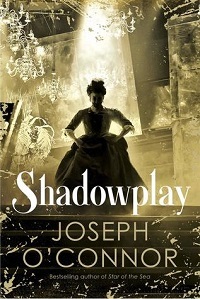
Drama surrounding the trio of actor Henry Irving, actress Ellen Terry, and theatre manager (and author) Bram Stoker in Victorian London. Harvill Secker, June 2019. [see on Goodreads]
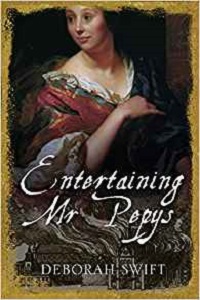
The final volume in Swift's trilogy about real-life women in the life and diary of Samuel Pepys; the protagonist here is musician-actress Elizabeth Carpenter. Accent, Sept. 2019. Not on Goodreads yet, but you can find it on Amazon UK.
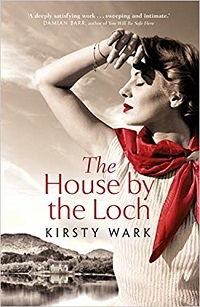
A novel of family secrets kept and revealed, set in Scotland (as you can infer from the title) in the 1950s and decades later. Two Roads, June 2019. [see on Goodreads]

Love, friendship, art and obsession centering on students at the Bauhaus art school in 1920s Germany, from the author of Mrs. Hemingway. Picador UK, June 2019. [see on Goodreads]

A young woman in occupied Tuscany during WWII falls in love with a black American soldier. Bloomsbury, Sept. 2019. [see on Goodreads] Also published by Bloomsbury in the US.

Romantic historical fiction set amid the exuberance of post-WWI England, from the award-winning author of Letters to the Lost. Simon & Schuster UK, May 2019. [see on Goodreads] Also to be published by Thomas Dunne in the US in December.

A shift in historical era for the multi-faceted Harris, whose new thriller is set in a remote town in Exmoor, southwest England, in the 1460s. Hutchinson, Sept 2019. [see on Goodreads] Also to be published by Knopf in the US in November. Thanks to Sarah OL for mentioning this book in an earlier comment.

Another forthcoming historical set in medieval times. Based on a true story uncovered by the Flemish Belgian author, The Convert reveals the life of a young woman from Provence who converted to Judaism to marry the man she loved. Text, July 2019. [see on Goodreads]

I've enjoyed Hislop's novels set in Greece, including The Island, The Thread, and The Sunrise. Her newest also has a Greek setting, this time during the German occupation and the country's civil war, and four decades later. Headline, May 2019. [see on Goodreads]

Australian writer Jones intertwines the stories of two women, one English and one Chinese, during the quest for gold in 19th-century Australia. Head of Zeus, June 2019. [see on Goodreads]

This new offering from an Oxford-based small press is another medieval on the list; it centers on 13th-century mathematician and scholar Michael Scot and his travels on behalf of Holy Roman Emperor Frederick II. Fairlight, Sept. 2019. [see on Goodreads]

African-born Susan, a servant in a Catholic household in late 16th-century England, is on a quest for her lost brother and her lost personal history. It's been blurbed by Miranda Kaufmann, the author of Black Tudors. Jacaranda, May 2019. [see on Goodreads]

Drama surrounding the trio of actor Henry Irving, actress Ellen Terry, and theatre manager (and author) Bram Stoker in Victorian London. Harvill Secker, June 2019. [see on Goodreads]

The final volume in Swift's trilogy about real-life women in the life and diary of Samuel Pepys; the protagonist here is musician-actress Elizabeth Carpenter. Accent, Sept. 2019. Not on Goodreads yet, but you can find it on Amazon UK.

A novel of family secrets kept and revealed, set in Scotland (as you can infer from the title) in the 1950s and decades later. Two Roads, June 2019. [see on Goodreads]

Love, friendship, art and obsession centering on students at the Bauhaus art school in 1920s Germany, from the author of Mrs. Hemingway. Picador UK, June 2019. [see on Goodreads]
Published on June 03, 2019 05:00
May 27, 2019
Review of Anna of Kleve, The Princess in the Portrait by Alison Weir, book four in her Six Tudor Queens series
 The title of Weir’s perceptive latest entry in her acclaimed Six Tudor Queens series, following Jane Seymour, the Haunted Queen (2018), signals a new, original view of Henry VIII’s fourth wife, best known as Anne of Cleves.
The title of Weir’s perceptive latest entry in her acclaimed Six Tudor Queens series, following Jane Seymour, the Haunted Queen (2018), signals a new, original view of Henry VIII’s fourth wife, best known as Anne of Cleves.A princess from the German duchy of Kleve, Anna grows up in her father’s learned court. In a speculative subplot, she is seduced by an attractive cousin-by-marriage, leading to an emotionally difficult secret. When England seeks an alliance with Kleve, Anna grows alarmed about King Henry’s poor marital history, and their first meeting is hardly auspicious.
Weir draws readers into Anna’s sympathetic viewpoint as she adjusts to unfamiliar customs, gazes at Greenwich Palace’s ornate splendor, and puzzles over Henry’s physical rejection even as he treats her kindly. Warm and intelligent, Anna learns to choose her battles, even if it means divorcing the monarch who has, surprisingly, become her good friend.
Political, legal, and religious matters are dexterously illustrated, and Weir devotes ample time to the little-known struggles of Anna’s post-annulment life. A richly satisfying portrait of a woman who made the best of limited choices.
This is the third entry of Weir's series that I've reviewed for Booklist, the first two being Anne Boleyn, A King's Obsession and Jane Seymour, The Haunted Queen . This review first appeared in the 4/15/19 issue. I'm curious what the full title of the next novel about Katherine Howard will be. The books in this series typically extend for 500-600pp, and I'm also curious how Weir will transform Katherine Howard's short life into an epic of similar scope.
For what it's worth, I think the cover design and title for Anna of Kleve are perfect and create the impression (one fulfilled by the novel) that Weir will be looking at her latest subject in a different way. The model – attractive, youthful, and shown holding a book – even resembles Anne from the famous Holbein portrait that convinced Henry VIII to wed her. The "Flanders mare" nickname that she was saddled with (sorry...) came from a 17th-century source, as mentioned by Weir in her author's note.
Published on May 27, 2019 11:41
May 22, 2019
The Satapur Moonstone by Sujata Massey, a mystery set in 1920s India
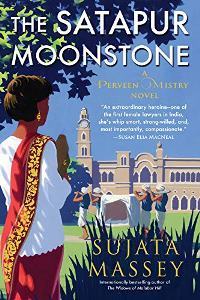 Perveen Mistry’s position as the only female lawyer in 1921 Bombay keeps her services in demand. When Sir David Hobson-Jones, the governor’s chief councillor, asks her to investigate a legal matter for the Kolhapur Agency, a British civil service branch, she’s wary of getting into bed with India’s colonizers. It’s a lucrative, prestigious short-term opportunity, however, and she feels compelled to accept.
Perveen Mistry’s position as the only female lawyer in 1921 Bombay keeps her services in demand. When Sir David Hobson-Jones, the governor’s chief councillor, asks her to investigate a legal matter for the Kolhapur Agency, a British civil service branch, she’s wary of getting into bed with India’s colonizers. It’s a lucrative, prestigious short-term opportunity, however, and she feels compelled to accept.The maharaja of the small princely state of Satapur is a ten-year-old boy, and his widowed mother and grandmother disagree on his education. Because they live in purdah, a woman lawyer is the best choice as mediator. While this premise is similar to the series opener, The Widows of Malabar Hill, Perveen quickly finds herself in a very different situation that tests her physical strength and negotiating skills and lands her into danger.
Massey devotes ample time to illustrating the politics and culture of a remote Indian princely state and the personalities of a new cast before introducing the mystery, which emerges midway through. This may unsettle genre readers who expect a more standard detective story, but it lets the investigation unfold organically. The maharaja Jiva Rao’s older brother and father both died well before their time; the palace servants blame a curse. Perveen comes to suspect a more human cause, and she worries for the boy’s safety.
Even before the mystery begins, a sense of uneasiness arises because Perveen is out of her element. She must travel by palanquin through the jungle to the palace, which she finds awkward and embarrassing, and endures the dowager maharani’s rude comments on her Parsi customs. The characters, even the unpleasant ones, are all intriguing, from the snobby royals to compassionate political agent Colin Sandringham. Perveen clearly wants to see more of him, her complicated marital status notwithstanding, and readers will too.
The Satapur Moonstone was published by Soho on May 14th. Its predecessor, The Widows of Malabar Hill (see my earlier review) has won multiple awards, namely (taken from the book's Amazon page): the 2019 Reading List Award from the ALA in the Mystery category, the 2019 Mary Higgins Clark Award, the 2019 Lefty Award for Best Historical Novel, and the 2018 Agatha Award for Best Historical Novel.
Needless to say, I'm on board with following the entire series. I reviewed this one for May's Historical Novels Review and am looking forward to seeing what Perveen does next.
Published on May 22, 2019 11:06
May 15, 2019
Slices of American history: Brides in the Sky by Cary Holladay
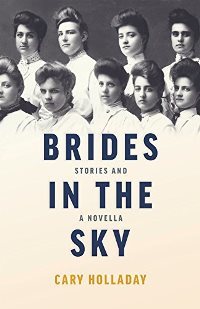 The eight stories and one novella in Holladay’s collection prove that it’s possible to capture the essence of a place, characters, or event (or all three) in a concise format. Three stories are contemporary, but historical fiction readers should find themselves sufficiently compelled to read them all. Taken together, the theme of women’s relationships resounds: the ties between mother and daughter, or between sisters (blood, sorority, or in-laws).
The eight stories and one novella in Holladay’s collection prove that it’s possible to capture the essence of a place, characters, or event (or all three) in a concise format. Three stories are contemporary, but historical fiction readers should find themselves sufficiently compelled to read them all. Taken together, the theme of women’s relationships resounds: the ties between mother and daughter, or between sisters (blood, sorority, or in-laws). The title story is named after the Pleiades, the “seven sisters” in the heavens, a constellation that Kate and Olivia Christopher glimpse as they, along with their new husbands and others, venture along the Oregon Trail from Virginia to the Willamette Valley in 1854. It’s impressive how Holladay compresses the epic scope of the journey into 22 pages, including the arid landscapes and accompanying hardships, shifting group dynamics, and one sister’s fateful choice.
“Comanche Queen” recounts the well-known frontier story of Cynthia Ann Parker, captured in a Comanche raid and returned to white civilization—unwillingly—two decades later. While her story hews closely to history, that of her family is partly imagined; it incorporates the themes of communication and random chance.
“Interview with Etta Place, Sweetheart of the Sundance Kid” is exactly that, a raw-voiced, too-brief narrative imagining their romantic partnership and what really happened to the pair. “Ghost Walk,” set in 1899 Philadelphia, tells a disturbing domestic story with a welcome, surprising twist. The final novella, “A Thousand Stings,” is written for adults but envisioned perfectly from the viewpoint of eight-year-old Shirley Lloyd. It combines a nostalgic look at childhood pastimes in 1967 Virginia with her observations on local dramas (the controversial minister is a hippie and antiwar protestor), her mother’s ennui, and her older sister’s adolescence. Each story is centered in its era, evoking life’s unexpected joys and hard edges.
Cary Holladay's Brides in the Sky: Stories and a Novella was published by Swallow Press, the imprint of Ohio University Press, in January. Historical fiction readers often prefer longer books and shy away from short-story collections, and if you're one of these, I recommend that you give this collection a try anyway! I was pleasantly surprised by the depth and range of these stories. I reviewed the book for May's Historical Novels Review based on a NetGalley copy.
Published on May 15, 2019 16:41
May 10, 2019
The Almanack by Martine Bailey, a richly atmospheric mystery of mid-18th-century England
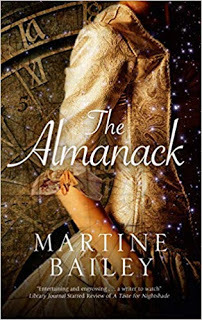 Saturated with beautiful images of the natural world in mid-18th century rural England, Bailey’s third mystery evokes a time when people regulated their lives according to the change of seasons and were fascinated by mechanisms, scientific and not, used to predict future events. It takes place during a pivotal period rarely seen in fiction: the adoption of the Gregorian calendar in 1752, when eleven days were “lost.”
Saturated with beautiful images of the natural world in mid-18th century rural England, Bailey’s third mystery evokes a time when people regulated their lives according to the change of seasons and were fascinated by mechanisms, scientific and not, used to predict future events. It takes place during a pivotal period rarely seen in fiction: the adoption of the Gregorian calendar in 1752, when eleven days were “lost.” A young woman named Tabitha Hart is robbed by her latest bedmate while traveling from London to her home village of Netherlea at her ailing mother’s request. Alas, she arrives too late: the Widow Hart lies cold in her bed, presumably having drowned in the river. Although she is shamed for her loose behavior, and for leaving behind an infant girl for her mother to raise, Tabitha is well-educated, and she takes up her mother’s former post as village searcher. She also picks up her mother’s favorite Almanack, and the scribbled marginalia in the little book, along with a threatening note, convinces Tabitha she was murdered.
Nat Starling, a poet newly arrived in town, helps Tabitha in her search to avenge her mother’s death, and the main clue is the purported killer’s initial, “D.” Although at first Tabitha suspects Nat is “all verse and no purse”—one of many fun expressions—she soon grows as beguiled by him as he is by her. Meanwhile, some dire predictions in the Almanack appear to be coming true.
Adding to the intellectual puzzle, each chapter begins with a riddle from the era (the answers can be found at the end). The writing has an authentic period richness, and while the mystery unfolds slowly, there are moments of fast-paced excitement and several real surprises on the way to the big reveal.
The Almanack was published by Severn House in May; I reviewed it for May's Historical Novels Review. I'd previously reviewed the author's first novel, An Appetite for Violets , a culinary mystery set also in Georgian times.
Published on May 10, 2019 06:07



